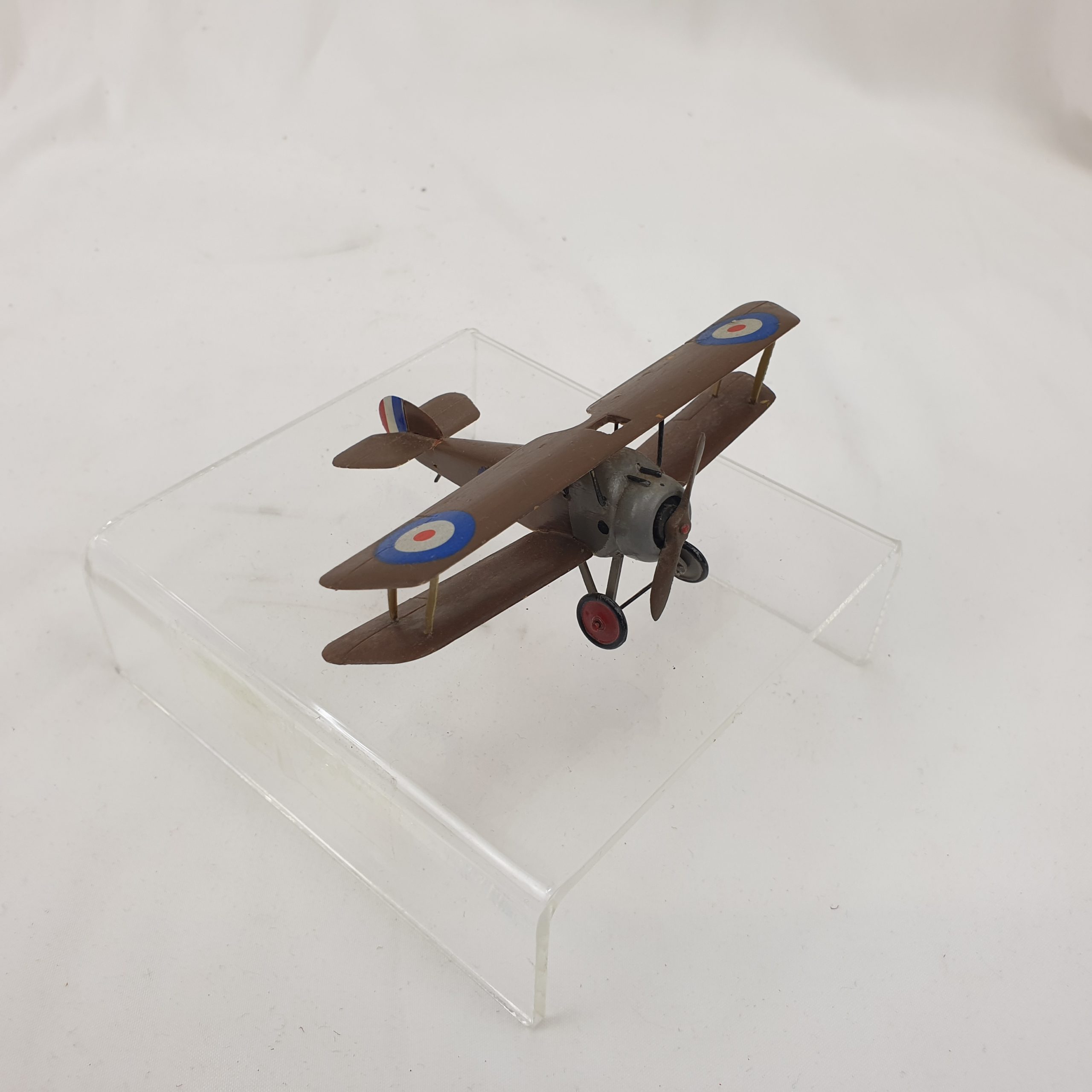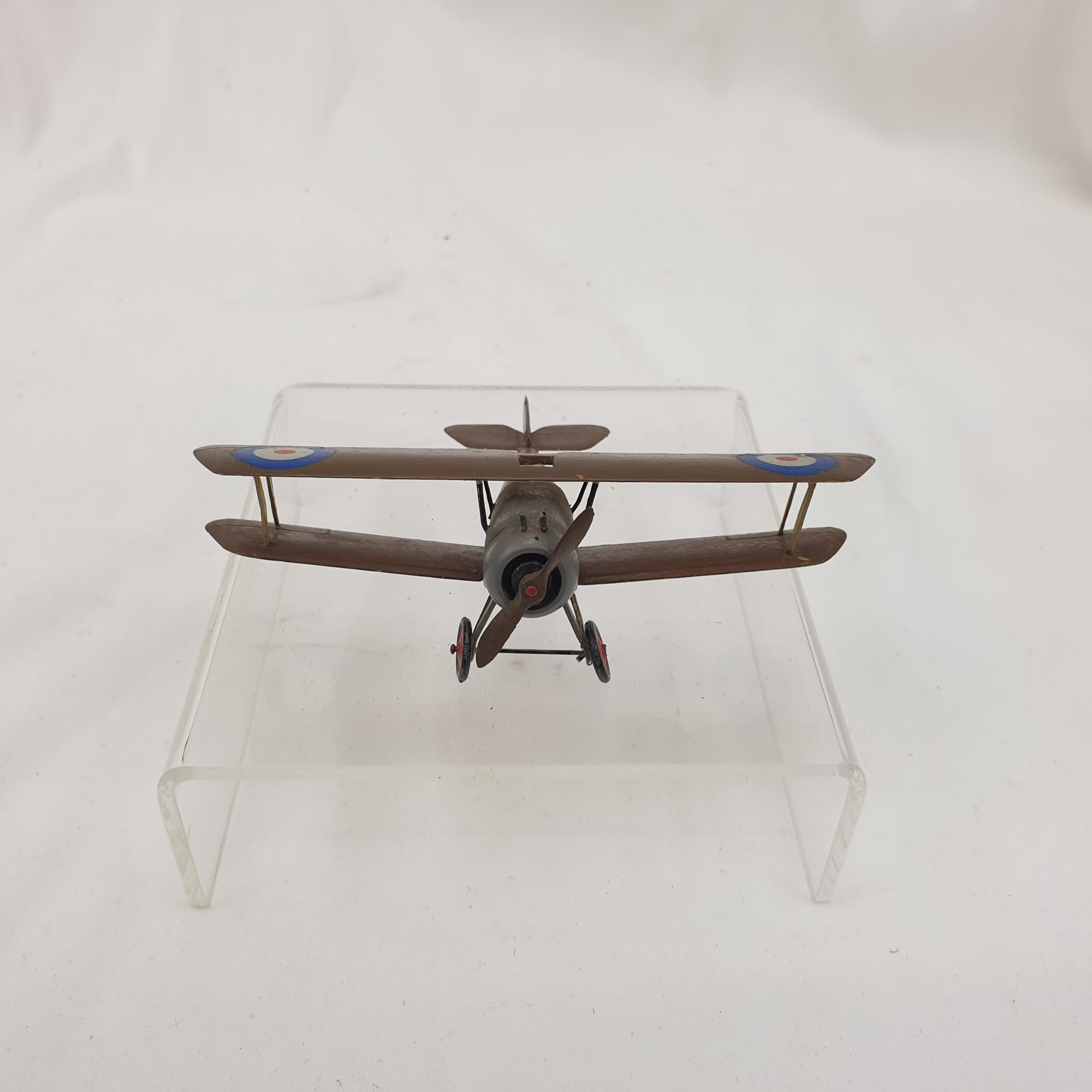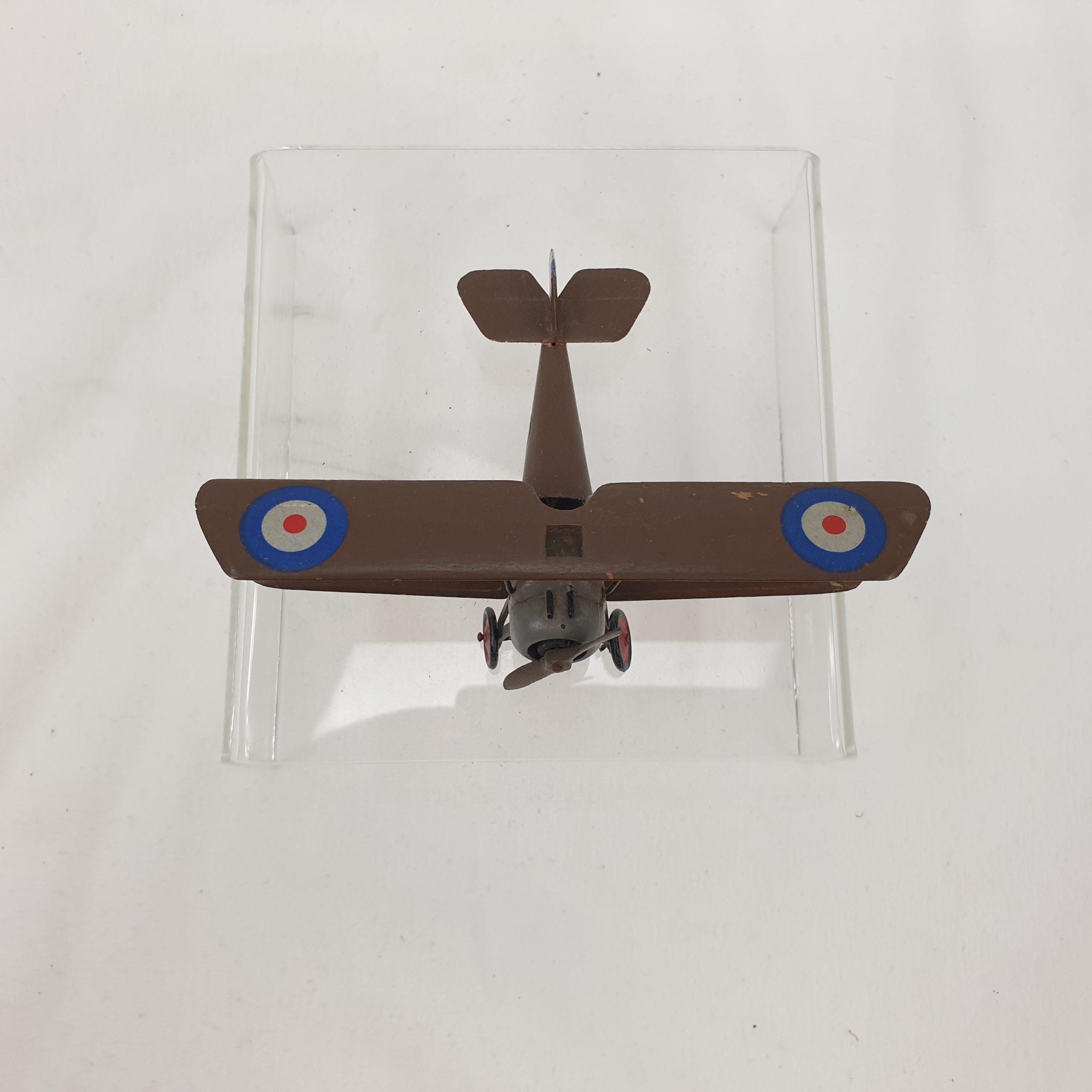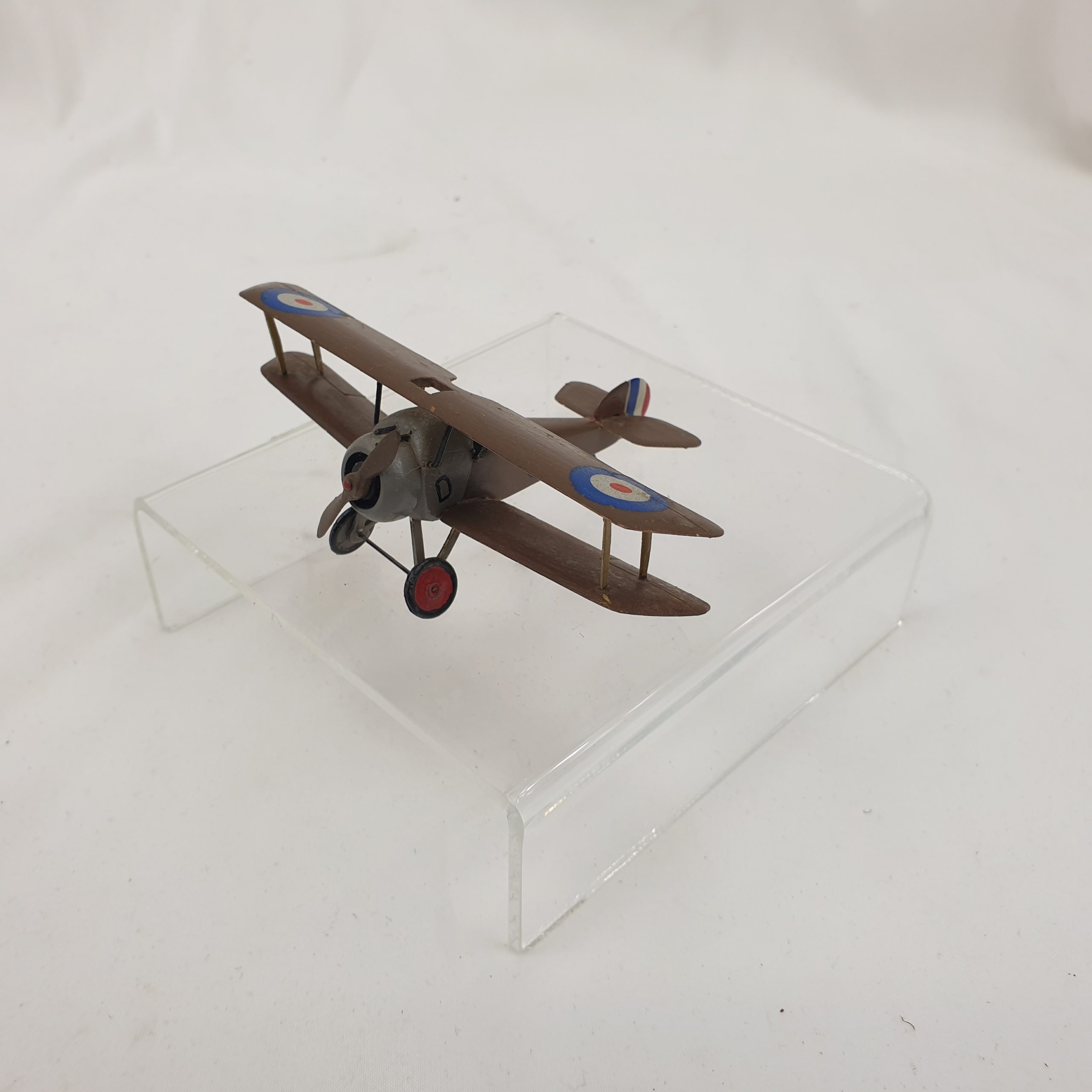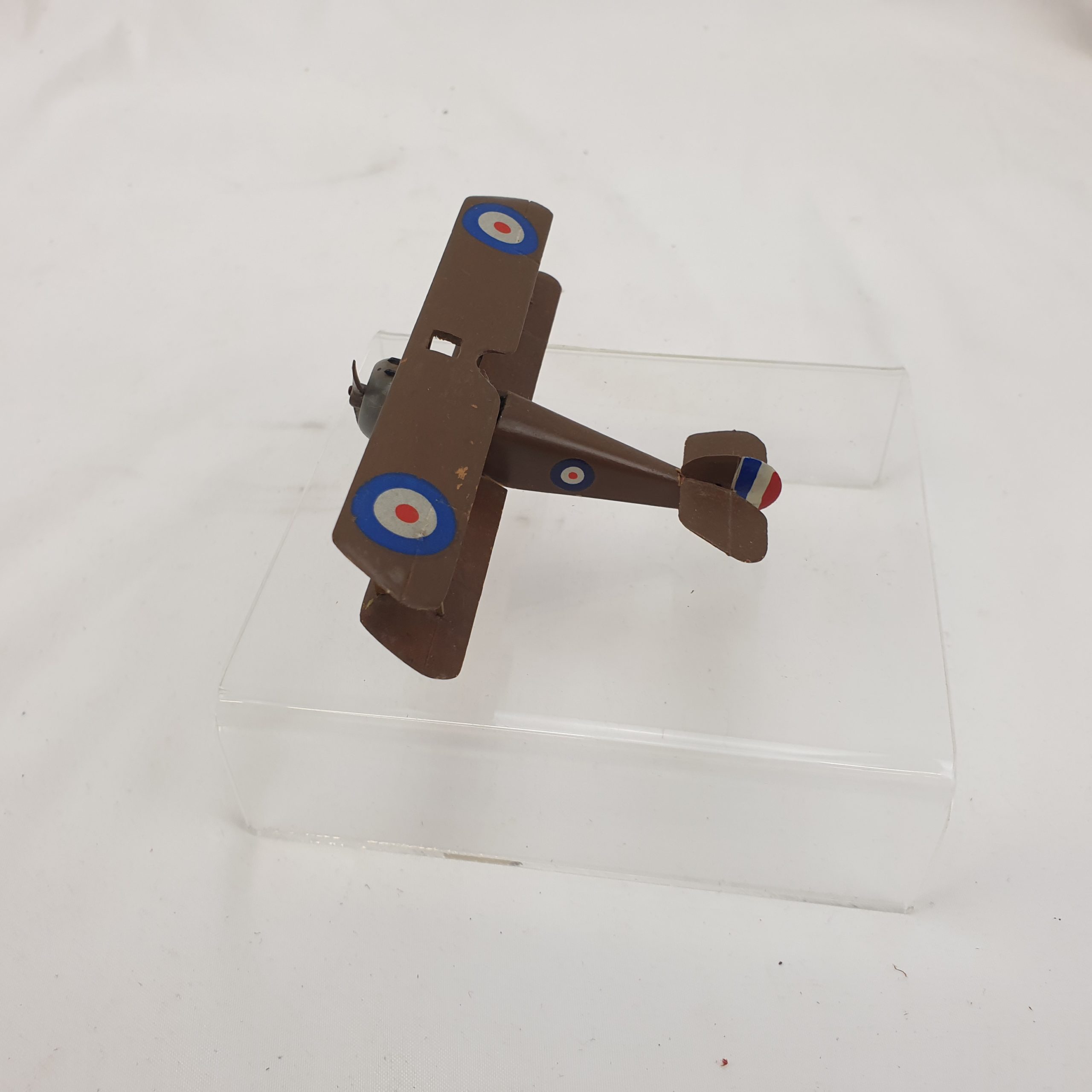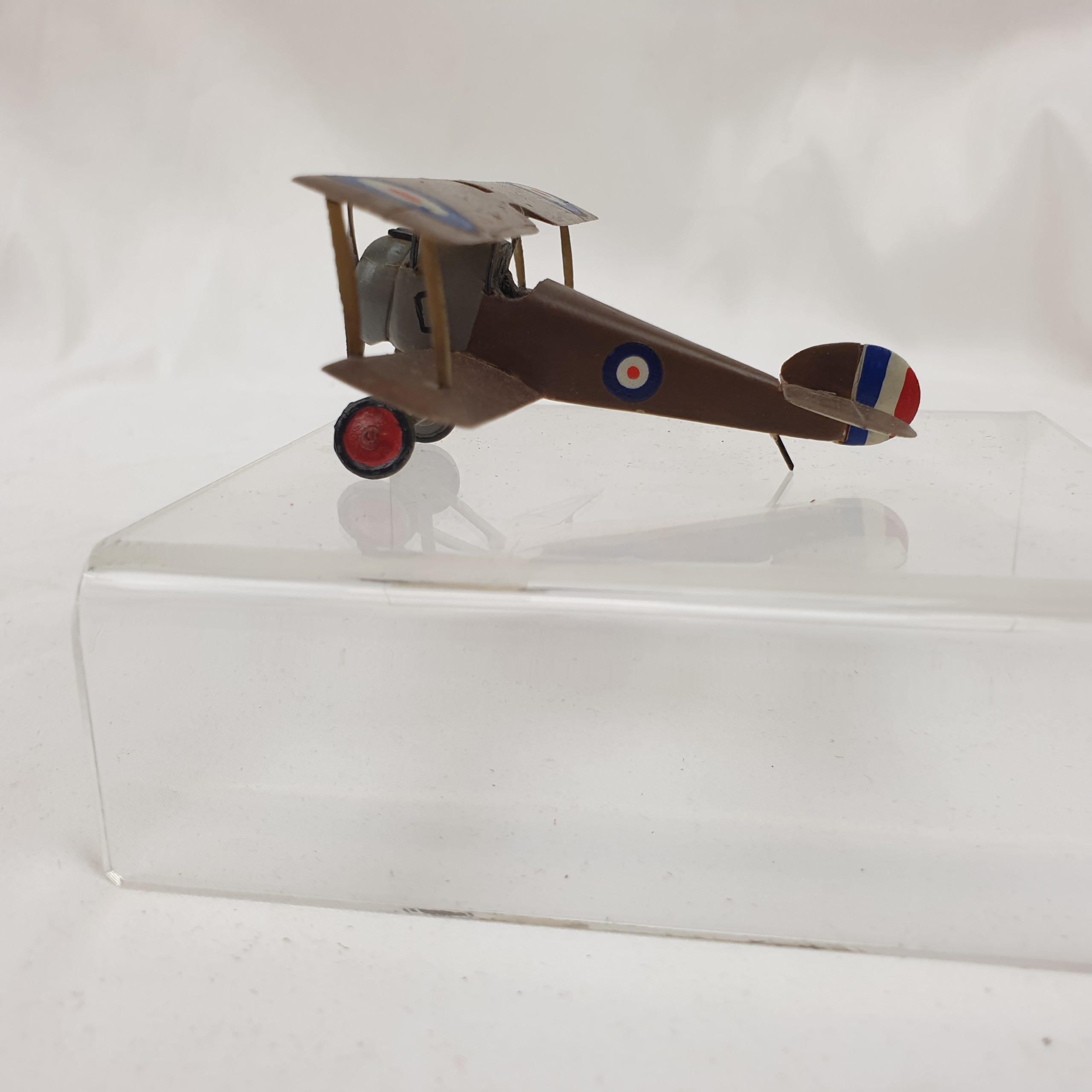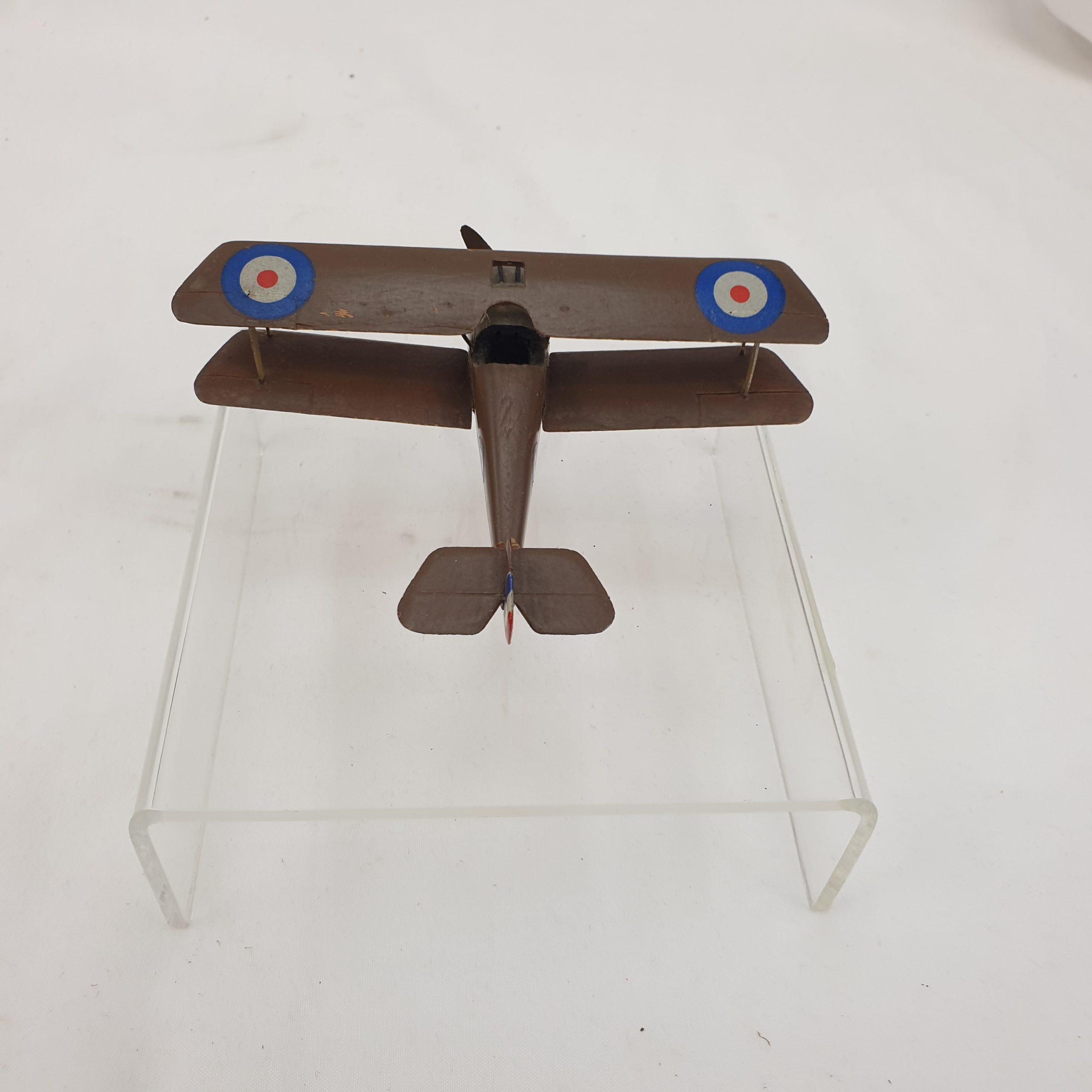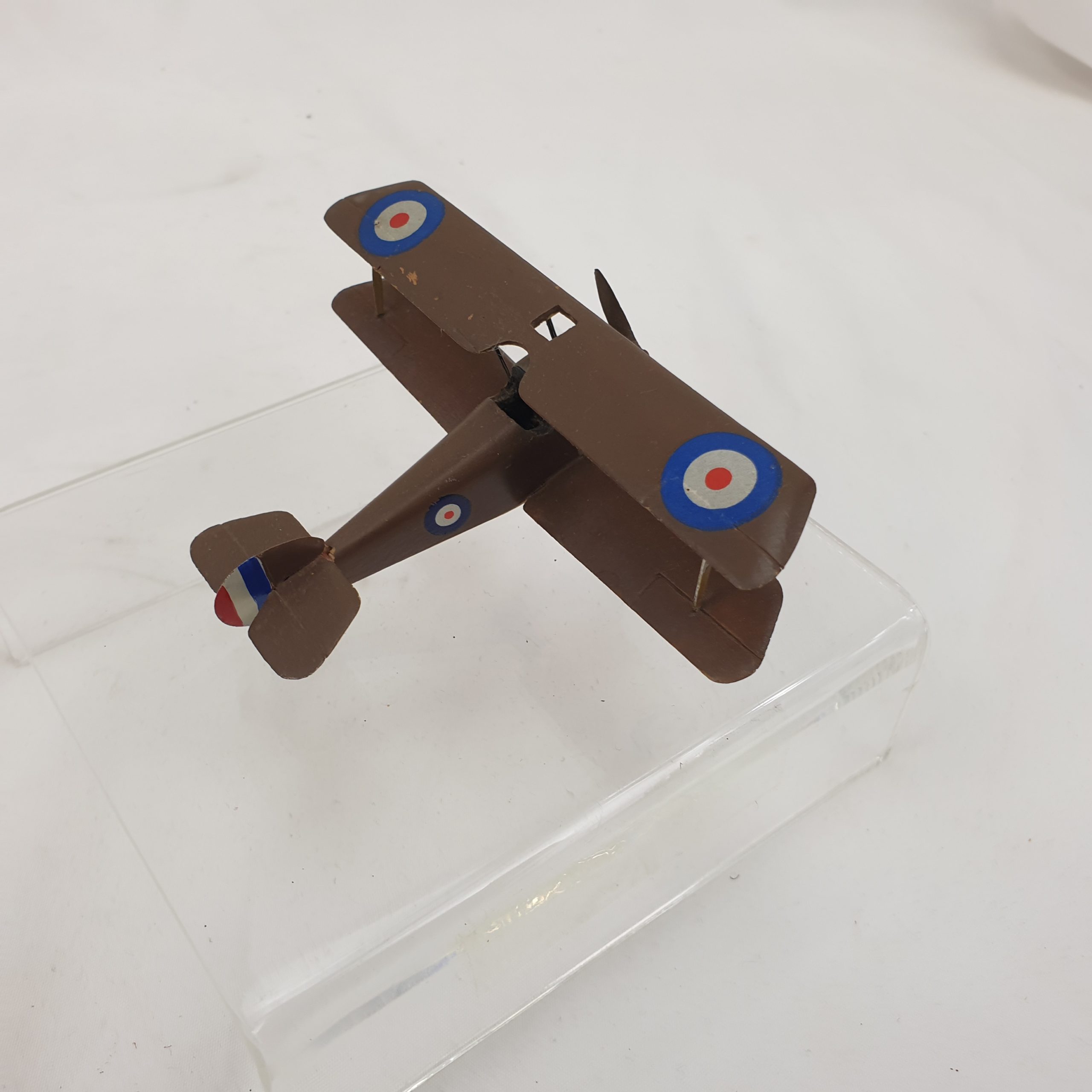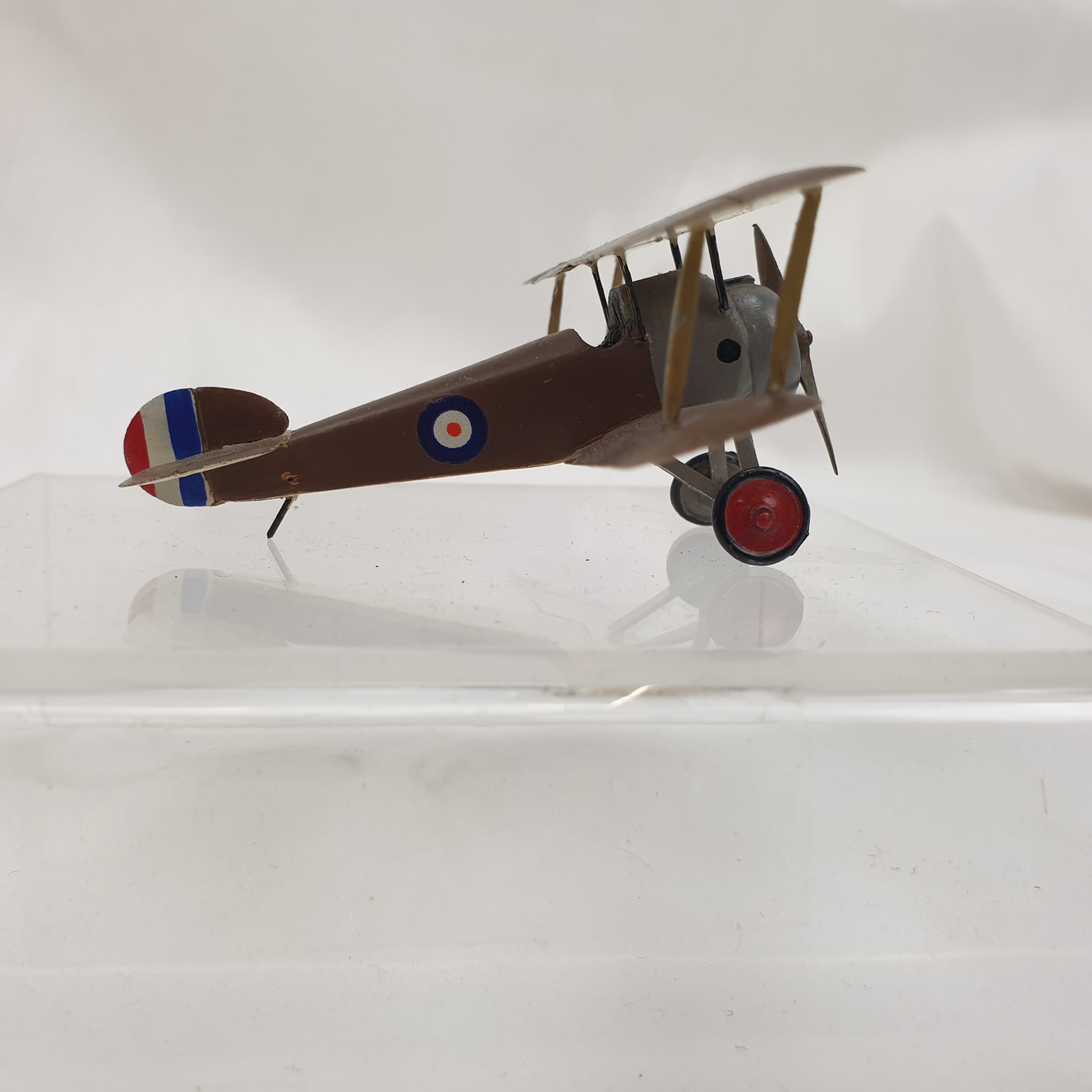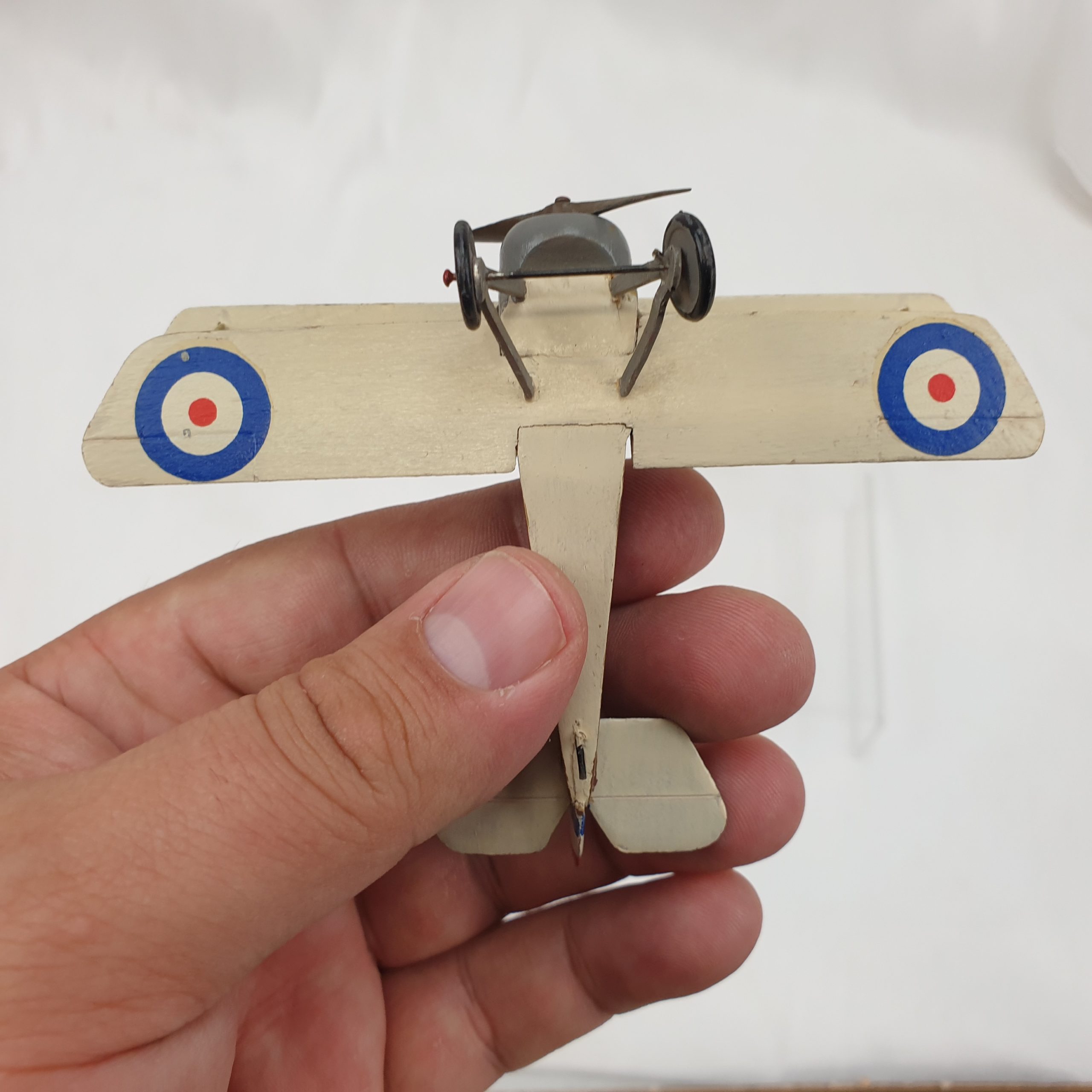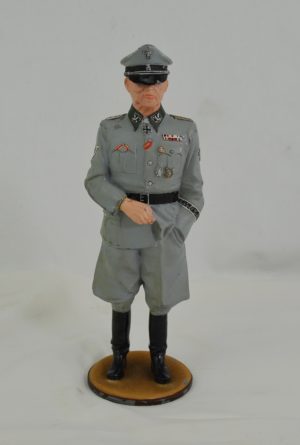~ Model of British Sopwith Dove Biplane ~
The Sopwith Dove was a British biplane aircraft developed and used during the early 1920s. It was a versatile and popular aircraft, serving in various roles, including civil aviation, military training, and reconnaissance. Here is a brief history of the Sopwith Dove:
Development:
Origins: The Sopwith Dove was designed by the British aircraft manufacturer Sopwith Aviation Company in the immediate aftermath of World War I. It was developed as a successor to the Sopwith 1½ Strutter, a World War I-era aircraft.
Design: The Dove was a two-seat biplane aircraft with a wooden frame and fabric covering. It was a development of the Sopwith Wallaby and was initially intended for civil aviation purposes, particularly for use by airlines and private owners.
Variants:
Dove I: The initial production version of the Dove, designed for civil use. It was powered by various engines, including the 130 hp Clerget 9B rotary engine.
Dove II: A military variant developed for the Royal Air Force (RAF). It featured modifications to meet military requirements, including armament provisions.
Operational Service:
Civil Aviation: The Sopwith Dove found success in civil aviation, being used by various airlines, including Handley Page Transport and Instone Air Line, for passenger and mail services. It was appreciated for its reliability and performance in the relatively early days of civil aviation.
Military Service: The military variant, the Dove II, was used for training and reconnaissance purposes by the RAF. It was employed in the immediate post-World War I period when military aviation was transitioning to peacetime roles.
Legacy:
The Sopwith Dove represents a transitional period in aviation history when military aircraft were adapted for civil purposes, and aviation technology was rapidly evolving. It demonstrated the adaptability of aircraft designed for wartime use to meet post-war civilian and military needs.
The Sopwith Dove, while not as well-known as some other aircraft of its era, served as a reliable and versatile aircraft in various roles. Its contribution to early civil aviation and the post-war military aviation landscape is part of its historical significance.
~ Dimensions ~
The wingspan is 11.5 cm and the length is 8 cm.


